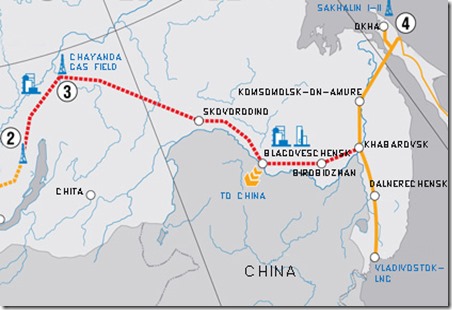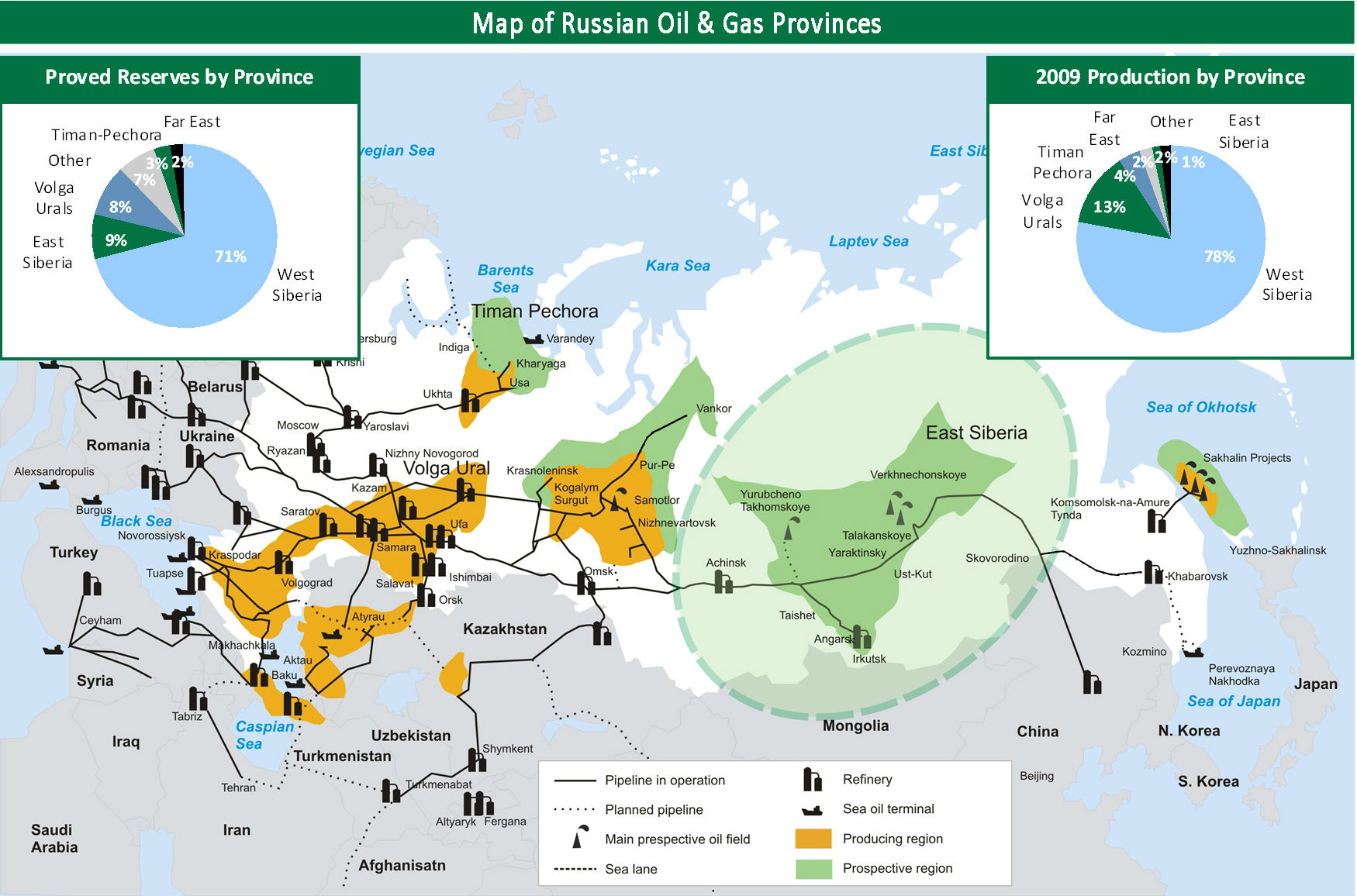The construction commencement date for the ‘Power of Siberia’ gas pipeline that will run across Eastern Siberia into China has been announced. As confirmed by several sources in the industry, the commencement ceremony is scheduled to be held in the city of Yakutsk on September 1, 2014.
is scheduled to be held in the city of Yakutsk on September 1, 2014.
Gasprom previously planned to start the pipeline construction in the summer of 2014. In fact, in the middle of June the President of the company Alexey Miller stated that the first pipeline joint would be welded “as early as August”. Direct supplies of gas to China should start in 2019.
The ‘Power of Siberia’ gas transmission system is intended for gas delivery from the Irkutsk Region and Yakutia gas production centres to Vladivostok in the Russian Far East and China. The approximately 4,000 km 56-inch gas pipeline with an annual throughout of 64 Bcm/a will be constructed along the existing ESPO oil pipeline. The branch to China will run via the border city of Blagoveschensk. The 30-year contract to supply 38 Bcm/a of gas to China was signed between Gazprom and CNPC on May 21 2014 after 10 years of negotiations.
Image: the ‘Power of Siberia’ gas pipeline marked by red dash line (gazprom.ru).

